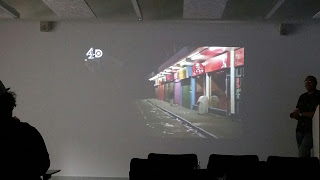Notes and feedback from the 25 word pitch presentation:
The dumped body seems to be tagged on the end - maybe doesn’t need to be in the film?
Why where they not friends still - was one of them going out of control, possibly a parent or relative was involved?
What do they do when they find the body? phone the police or investigate? phoning the police doesn’t make for a great story.
Does it have to be a drama? Could be a comedy, just a dumped body randomly and it could be a funny piece
Maybe it could be one leading somebody to the body on purpose to get involved with the murder.
Washed up body at a lake or old dockyard? Most likely place for someone not to have realised the body before hand.
Maybe the dead body could not actually be dead. Comedy twist?
---------------------------------------------
Straight away I feel finding a random body in the high street isn't very plausible, so if I was to go down the drama route, having a washed up body is much more plausible and that would change the setting to a beach town or on the beach?
I feel it could work very well as a comedy after hearing everyone feedback. Possibly play on the fact that there is a random body dumped.
Possibly the two main characters could be drunk and that is why they dont phone the police straight away. It could have been a bit of time between them meeting and then finding the body. I'm thinking we could see them at a pub and then possibly walking along the beach?
I think a funny way to end it, if its a drama or comedy would be at the end the body bag or whatever the body is stored in to open up and the character would walk out. I think this would be a funny ending whatever the genre.
Opening shot could be the dead body, then right away we know what the main story is. Then it could cut back to the main characters.
Before I decide on the start i need to make sure I know the ending and i can plan it towards that.
Before I decide on the start i need to make sure I know the ending and i can plan it towards that.


























